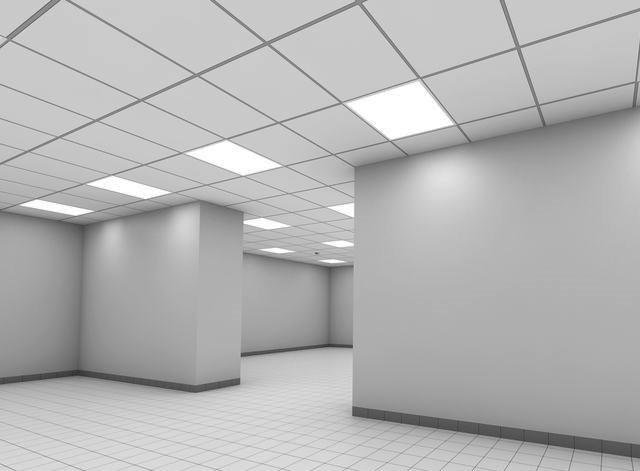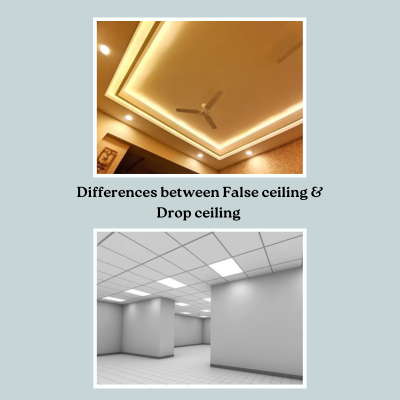Differences Between False Ceiling & Drop Ceiling
Both "false ceiling" and "drop ceiling" refer to secondary ceilings suspended below the main structural ceiling, but they are often used interchangeably. However, there are some distinctions in terms of context and specific types:
- False Ceiling
A false ceiling, also known as a suspended ceiling, is an additional ceiling installed below the main ceiling. It is used for various purposes such as aesthetic enhancement, soundproofing, insulation, and concealing electrical wires, ducts, and plumbing.
- Characteristics:
- Materials: Gypsum board, plaster of Paris (POP), wood, metal, or PVC.
- Construction: Typically involves a framework (often metal or wooden) fixed to the walls and suspended from the main ceiling.
- Installation: Customizable to different shapes and designs, including curves and intricate patterns.
- Uses: Common in residential spaces for decorative purposes, thermal insulation, and noise reduction.
Also read: Latest False Ceilings Design for Hall
| "BEST BUILDERS FLOOR APARTMENT IN CHENNAI" |
- Drop Ceiling

A drop ceiling, also known as a dropped ceiling, grid ceiling, or T-bar ceiling, is a specific type of false ceiling. It consists of a metal grid suspended from the structural ceiling, with lightweight panels or tiles placed into the grid.
- Characteristics:
- Materials: Lightweight tiles made of materials like mineral fiber, fiberglass, metal, or PVC.
- Construction: The grid system is hung from the main ceiling using wires, and the tiles are dropped into the grid.
- Installation: Easy to install and remove tiles, making it practical for access to the space above the ceiling for maintenance.
- Uses: Common in commercial buildings, offices, and industrial spaces due to ease of access for maintenance and utilities.
- Key Differences:
- Materials and Appearance:
- False ceilings can be made from various materials and are often designed for aesthetic purposes.
- Drop ceilings use a grid system with removable tiles, generally offering a more uniform appearance.
- Installation and Maintenance:
- False ceilings usually require a more permanent installation and might involve more complex designs.
- Drop ceilings are easier to install and maintain due to the modular nature of the tiles.
- Applications:
- False ceilings are versatile in terms of design and are widely used in both residential and commercial spaces for their aesthetic and functional benefits.
- Drop ceilings are particularly popular in commercial and industrial settings where easy access to utilities and wiring is a priority.
While both types serve similar functions, a false ceiling can encompass a range of materials and designs, often chosen for decorative and functional purposes in various settings. A drop ceiling is a specific type of false ceiling, favored in commercial environments for its practicality and ease of maintenance.
Also read: Difference Between True Ceiling & False Ceiling
https://www.livehomes.in/blogs













